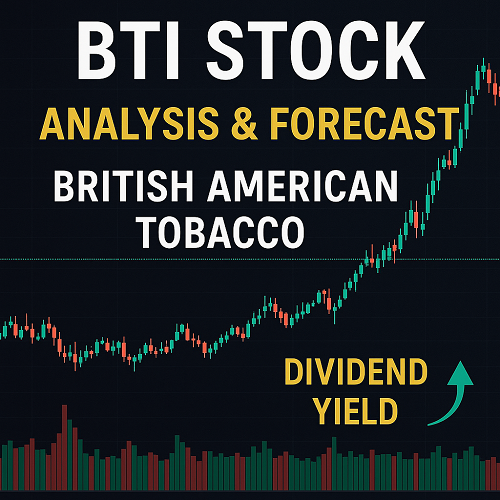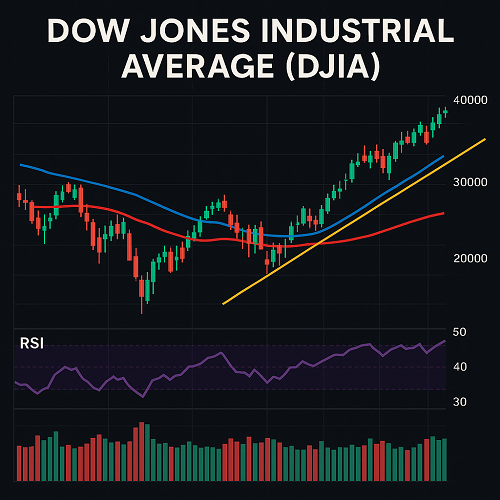British American Tobacco p.l.c. (NYSE: BTI) is one of the world’s largest tobacco and nicotine companies, commanding a massive global presence across more than 180 markets. Investors are often interested in the BTI stock price due to its well-known status. Known for iconic brands such as Dunhill, Lucky Strike, Camel, and Pall Mall, BTI has also been rapidly transforming itself for the next generation — focusing on reduced-risk products like vapes, nicotine pouches, and heated tobacco.
While tobacco remains one of the most stable cash-generating industries, investors have increasingly questioned the sector’s long-term outlook. With regulation, health trends, and ESG concerns pressuring the space, can BTI still deliver superior returns — or is its era of dominance fading?
This article provides a deep dive into BTI stock’s fundamentals, dividend outlook, growth catalysts, and risks, offering a comprehensive investment thesis and forecast through 2030.
Company Overview
Founded in 1902, British American Tobacco is headquartered in London and operates through a diversified portfolio spanning combustible tobacco products and non-combustible “New Category” products — which include Vuse (vapes), glo (heated tobacco), and Velo (nicotine pouches).
Revenue Breakdown
- Combustibles (Traditional Cigarettes): ~78% of total revenue
- New Category (Vuse, glo, Velo): ~22% and growing at double-digit rates annually
- Key Markets: U.K., U.S., Western Europe, Asia-Pacific, Africa, and Latin America
BTI’s U.S. exposure — particularly through brands like Newport and Camel — gives it significant pricing power and profitability, though also higher regulatory risk.
Financial Performance (2023–2025)
BTI’s financials remain a study in consistency and cash flow dominance.
| Metric | 2023 | 2024E | 2025E |
|---|---|---|---|
| Revenue | $35.9B | $37.4B | $38.6B |
| Operating Margin | 41% | 42% | 43% |
| Free Cash Flow | $9.7B | $10.1B | $10.5B |
| Dividend Yield | 8.3% | 8.6% | 8.4% |
Despite global volume declines in traditional cigarettes (around 3–4% per year), BTI has offset the impact through price increases and expansion in reduced-risk products (RRPs).
The company has also been aggressively deleveraging its balance sheet after the $49B Reynolds acquisition, reducing net debt-to-EBITDA from 4.0x in 2018 to under 2.8x by 2024.
BTI Dividend Analysis
For income investors, BTI is a dividend powerhouse.
Dividend Profile
- Forward Dividend Yield: ~8.5% (as of October 2025)
- Dividend Frequency: Quarterly
- Payout Ratio: ~65% of adjusted EPS
- Dividend Growth (5-Year CAGR): 5.2%
BTI’s dividend policy prioritizes shareholder returns, supported by predictable cash flows from its mature cigarette business. Even amid sector pressures, BTI has maintained dividend stability — a rarity in global equities today.
Is the Dividend Safe?
Yes. With free cash flow consistently exceeding dividend obligations by 25–30%, BTI’s dividend appears sustainable, provided that reduced-risk products continue scaling toward profitability.
Growth Catalysts
1. Shift Toward Reduced-Risk Products (RRPs)
BTI’s transition toward non-combustibles has been accelerating:
- Vuse (vape brand) now holds ~40% market share in key markets like the U.S. and Canada.
- glo (heated tobacco) and Velo (nicotine pouches) continue double-digit growth in Europe and Asia.
- BTI aims to generate £5 billion in revenue from New Categories by 2025, positioning it alongside Philip Morris’s IQOS as a leading innovator in harm reduction.
2. Cost Optimization & Debt Reduction
The company’s £2 billion efficiency program has been delivering steady margin expansion. Lower interest expenses post-deleveraging are boosting free cash flow — a key enabler of share buybacks and dividend safety.
3. Emerging Market Expansion
While Western markets stagnate, BTI’s exposure to high-growth regions (Asia-Pacific, Africa, Latin America) provides volume upside. Cigarette demand in emerging economies remains resilient, offsetting declines in developed regions.
Risks & Challenges
Despite its strengths, BTI faces multiple structural and external risks:
1. Regulatory & ESG Pressures
Tobacco taxes, plain packaging laws, and flavor bans continue to challenge the industry’s profitability. Moreover, ESG-focused funds often exclude tobacco, suppressing valuation multiples.
2. Declining Cigarette Volumes
Even with RRPs, BTI still depends on combustibles for over 70% of its profits. A faster-than-expected decline in smoking rates could pressure earnings before New Categories reach scale.
3. Litigation Risk
BTI faces ongoing legal challenges, including potential lawsuits tied to health claims and product labeling, particularly in the U.S.
4. Currency & Geopolitical Exposure
Operating across 180 markets exposes BTI to FX volatility and regional regulatory shocks — notably in emerging economies.
Valuation Overview (as of October 2025)
| Metric | BTI | Philip Morris (PM) | Altria (MO) |
|---|---|---|---|
| P/E (Forward) | 7.8x | 16.2x | 9.5x |
| EV/EBITDA | 8.0x | 13.1x | 10.0x |
| Dividend Yield | 8.5% | 5.1% | 8.2% |
| Payout Ratio | 65% | 82% | 78% |
BTI trades at a significant discount to peers, partly due to its London listing and investor skepticism around its U.S. ADR. However, its free cash flow yield (~12%) and high dividend make it arguably one of the most undervalued blue-chip income plays globally.
BTI Stock Forecast 2025–2030
| Year | Low Case | Base Case | Bull Case |
|---|---|---|---|
| 2025 | $28 | $35 | $40 |
| 2026 | $30 | $38 | $44 |
| 2030 | $32 | $45 | $55 |
- Base Case: Assuming 3% annual EPS growth and stable payout ratio, BTI’s total return potential (dividends + capital appreciation) could exceed 12–15% annually.
- Bull Case: If New Categories achieve 30% of revenue by 2030, shares could re-rate to 10–12x earnings, pushing BTI above $50/share.
- Bear Case: Accelerated cigarette volume declines or unfavorable regulation could cap the stock near $30/share.
Technical & Trading Insights
As of Q4 2025:
- BTI stock trades near $34, above its 200-day moving average ($31).
- Support zone: $30–31
- Resistance: $38–40
- Momentum: Neutral to slightly bullish
- RSI near 55 indicates balanced sentiment, suggesting accumulation potential for long-term income investors.
Short-term traders can exploit range-bound movements, while long-term holders benefit from steady dividends and capital stability.
Investment Thesis: Is BTI a Buy?
BTI combines strong cash flow, industry-leading dividend yield, and credible transition strategy. While ESG constraints and cigarette declines pose structural challenges, the market appears overly pessimistic.
Pros:
- 8%+ sustainable dividend yield
- Strong pricing power
- Growth in RRPs (Vuse, glo, Velo)
- Attractive valuation
Cons:
- Regulatory overhangs
- ESG exclusion limits institutional inflows
- Slow progress toward full RRP profitability
Bottom Line:
BTI remains a high-yield, undervalued defensive play. For long-term dividend investors seeking steady income and moderate upside, BTI offers a compelling risk-reward ratio heading into 2025–2030.
FAQs About BTI Stock
Q1: Is BTI stock a good dividend investment?
Yes. BTI’s 8%+ yield is among the highest in the FTSE and NYSE, supported by robust free cash flow and stable earnings.
Q2: How safe is BTI’s dividend?
Very safe under current conditions. The payout is well-covered by free cash flow, with debt trending down.
Q3: What are BTI’s main growth drivers?
Non-combustible product growth, emerging markets, and cost efficiencies.
Q4: Why is BTI stock undervalued?
Investor avoidance of tobacco, ESG restrictions, and U.K. listing effects keep valuation depressed despite strong fundamentals.
Q5: What is the long-term outlook for BTI stock?
Moderate EPS growth (2–4% per year) plus a high dividend yield translates into a potential total annual return of 10–15% through 2030.
Conclusion
British American Tobacco remains a cash flow juggernaut in transformation. Despite challenges, its pivot toward reduced-risk products, disciplined cost control, and shareholder-friendly capital allocation support a bullish long-term outlook.
For investors seeking passive income, inflation resilience, and undervalued blue-chip exposure, BTI stock remains a buy — not a relic.





 XAUT-USD
XAUT-USD  AMD
AMD  MARA
MARA  SHOP
SHOP  BULL
BULL  CL=F
CL=F